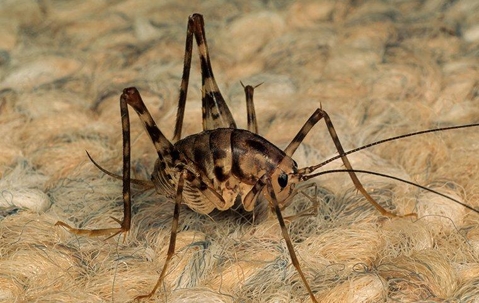If you’re a sports fan or, really, if you’ve ever been on a sports team, you know the magic of a good nickname. Typically, it’s the best players on the team that have the best nicknames. It’s the unique players that stand out or have a lot of personalities, the ones that everybody seems to gravitate towards. The nicknames take on a type of persona and give people a certain mystique. The camel cricket is no exception. Also known as the cave cricket or the spider cricket, these unique pests are unlike any other cricket because they don’t chirp. However, as interesting as camel crickets can be, you still don’t want them in your house.
Identifying Camel Crickets
As a Long Island homeowner, you’ve probably seen these in your home or around your property and never knew what they were. They really do look a lot more like spiders than crickets, but they only have six legs. The “camel cricket” name comes from their humpbacked shape. Their light or dark brown bodies are almost overshadowed by their very large hind legs that give them the ability to hop around explosively.
In the wild, camel crickets, or “cave crickets”, love to hang out in, yes, you guessed it, caves. They’re highly attracted to dark, moist areas where they can stay cool. If you don’t have caves on your property, then you’re likely to find camel crickets under mulch or stones in the yard. (And if you do have caves on your property, we’d love to chat more about that). In your house, they’re likely to hide out in damp basements and crawl spaces, which attract them most when it gets too hot outside for them to reproduce.
Prevention Methods
Since camel crickets don’t chirp, they tend to go unnoticed more so than other crickets. However, the longer they go unnoticed, the more they’ll begin to congregate in large numbers, which can be bad news for your house. Spending time in low-traffic, basement areas, camel crickets will have nearly unlimited and uninhibited access to their favorite food sources: wood, carpet, linens, and cardboard. They’ll eat or chew almost anything you think you have properly stored, and you might not notice for quite a while. This destruction can be very frustrating and very expensive at times, especially when considering the large number of crickets who will gather in one spot. Call Parkway Pest Services for an inspection today!
Once you have an infestation, they’re nearly impossible to get rid of, so you should shift your focus to prevention. You’ll need to watch out for them during summer months, as they need somewhere cool and damp in order to reproduce. By adhering to the following tips, you might be able to prevent an infestation before it gains a foothold:
- Moisture Management: Using a dehumidifier in your crawl spaces and keeping an eye out for leaking pipes can help you reduce the areas that will attract camel cricket activity.
- Proper Ventilation: Basement and attic ventilation is usually another source of moisture buildup and can create an ideal habitat for camel cricket reproduction.
- Firewood Storage: Whenever firewood gets wet, it becomes the perfect place for camel crickets to choose as a reproduction site. Make sure to seal it and store it away from the house.
- Lawn Maintenance: Any tall grass or overgrown shrubs can become an ideal habitat for a camel cricket gathering.
While these prevention methods can be effective, camel crickets tend to have a mind of their own. Plus, do-it-yourself pest control methods almost always lead to inconsistent results and repeated efforts. For a camel cricket solution that can work the first time, contact Parkway Pest Services for more advice or assistance.

